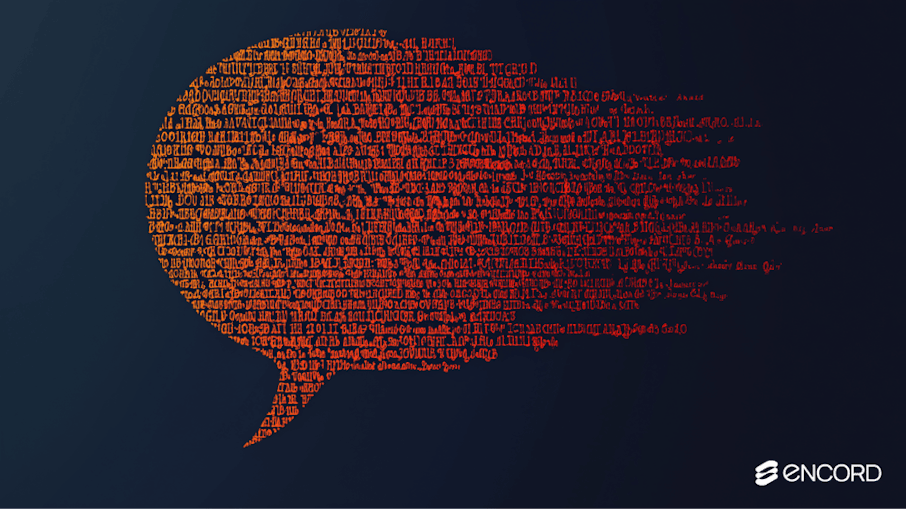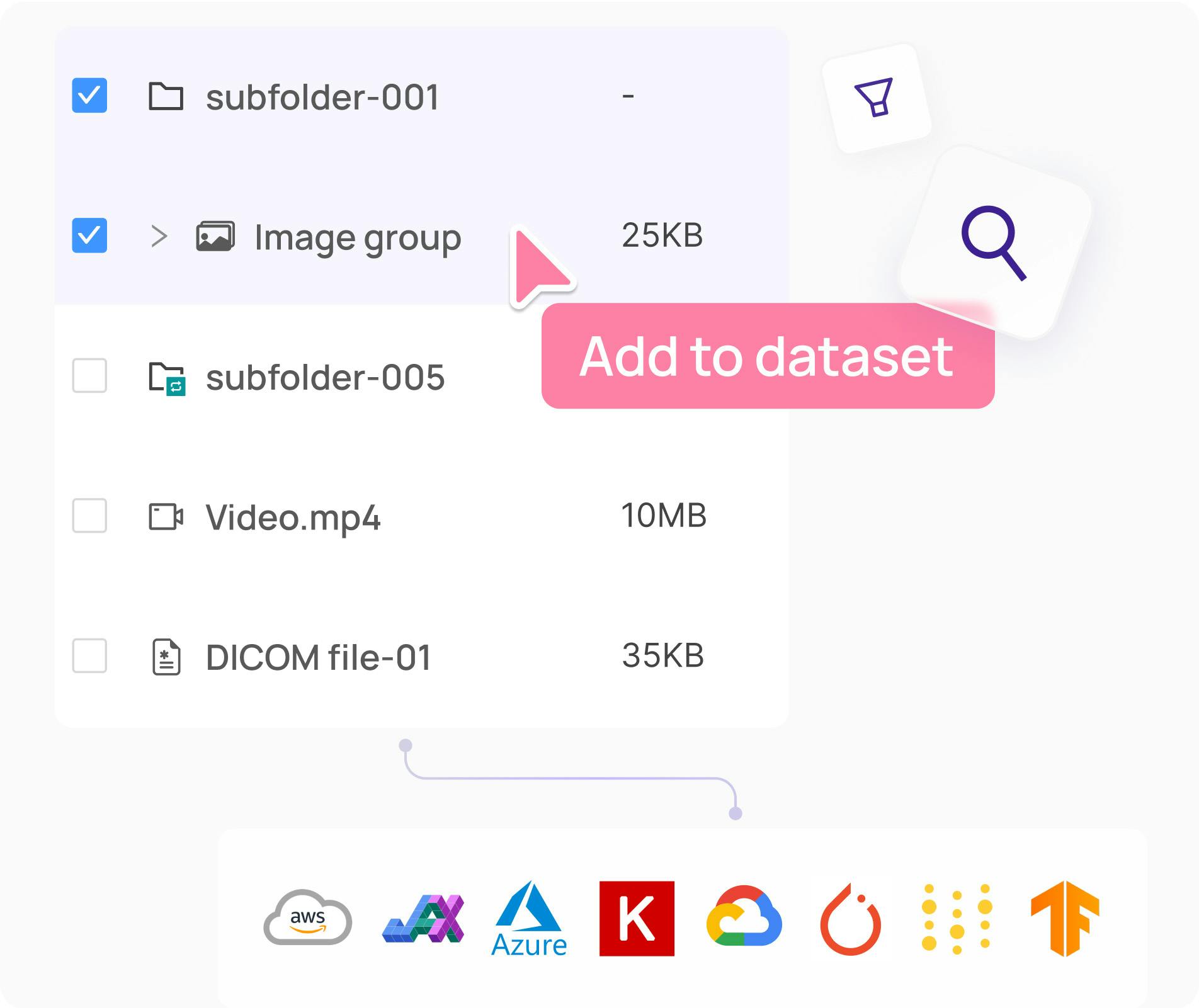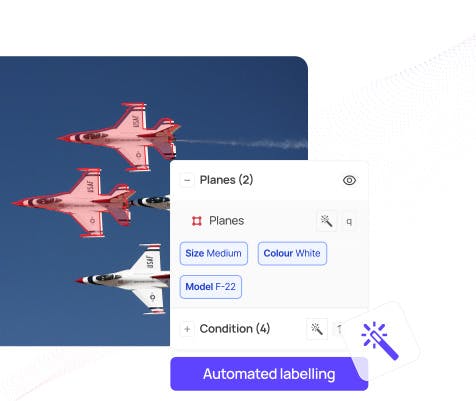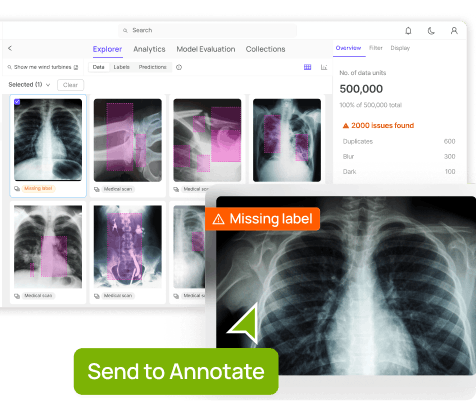Contents
Steps of Speech-to-Text AI Systems
Applications of Speech-Text-AI
Challenges in Speech-to-Text AI
Role of High Quality Data
How Encord Helps in Data Annotation
Key Takeaways: Speech-to-Text AI
Encord Blog
How Speech-to-Text AI Works: The Role of High Quality Data
5 min read

Imagine a world where every spoken word is immediately recorded as clear, actionable text by your very own digital scribe that never gets tired. Imagine yourself in a lively meeting or in an inspiring lecture full of great ideas that come fast and every insight matters. With Speech-to-Text (STT) AI this dream is now reality.
Speech-to-Text or Automatic Speech Recognition (ASR) uses artificial intelligence (AI) to convert spoken words into written text. It uses audio signal processing and machine learning (ML) algorithms to detect speech patterns in the audio and transform it into accurate transcriptions.

How Speech-to-Text AI Works (By Author)
Steps of Speech-to-Text AI Systems
Following are the key components or steps of Speech-to-Text AI systems.
Audio Processing
In this step, the audio input is processed. The background noise is removed and normalization (i.e. adjustment of volume levels for consistency) is performed. Finally, the sampling (i.e. converting analog audio signals to digital signals) and segmentation is done to segment audio signals into smaller parts for processing.
Feature Extraction
In this step, the preprocessed audio is transformed into a set of features which represent the speech characteristics. There are some common techniques such as Mel-Frequency Cepstral Coefficients (MFCC), log-mel spectrograms, or filter banks which are used to extract audio features. These methods capture various details of the speech signal which helps the system to analyze and understand these speech signals.
Acoustic Modeling
This involves feeding the extracted features into an acoustic model (a deep neural network), which learns to map these features to primitive sound units (i.e. phonemes or sub-word units). NVIDIA has developed multiple models that utilize convolutional neural networks for acoustic models, including Jasper and QuartzNet.
Language Modeling
The system uses statistical methods (such as n-gram) or neural networks(such as Transformer based models like BERT) to understand the context and predicted word sequences. This helps in accurately converting phonetic sounds into meaningful words and sentences.
Decoding
Finally, the AI combines the output from acoustic and language models to produce the text transcription of the spoken words.

How Speech-to-Text Works (Source)
Applications of Speech-Text-AI
When most people think of Speech-to-Text their minds go to having a chat with Siri or Alexa about the weather or to set an alarm reminder. For many of us, this was our first, or most salient, touchpoint with AI. Speech-to-Text has several applications across various domains. Some key applications of Speech-to-Text AI are discussed here.
Virtual Assistants
As mentioned above, a virtual assistant is one of the most popular applications of Speech-to-Text AI. It allows virtual assistants to interpret spoken language and respond appropriately, such as asking the time, weather, or to start a call It converts users voice commands into text that the backend systems process which as a result enable interactive, hands-free operation.
Some examples of virtual assistants that you are likely familiar with are Amazon Alexa and Google Assistant. A user may ask, “What is the weather today?”. While this might seem like a simple query to those of us asking the question.The assistant converts the spoken query into text and processes the request by accessing weather data, and responds with the forecast. This integration of speech recognition enhances user convenience and accessibility. But the role of visual assistants does not stop here. They are also used in many applications such as home automation as shown in figure below.

How Alexa Works for Home Automation (Source)
The image above illustrates how speech-to-text AI enables home automation using Alexa. When a user gives a command, "Alexa, turn on the kitchen light," the Amazon Echo captures the speech and converts it into text. The text is processed by Alexa's Smart Home Skill API which identifies the intent through natural language processing. Alexa generates a directive which is sent to a smart home skill. The smart home skill then communicates with the device cloud. The device cloud relays the command to the smart device, such as turning on the kitchen light.
Meeting and Conference Tools
Have you ever been on a work-from-home call and accidentally lost focus? It happens to the best of us. In collaborative environments such as online meeting and conferencing tools, Speech-to-Text AI helps improve productivity by transcribing spoken words. Speech-to-Text AI enables accurate records, searchable archives, and real-time captioning for remote participants.
For example, Microsoft Teams uses Speech-to-Text AI to generate live transcriptions during meetings. After the meeting, the transcript is saved and searchable in the chat history. This helps participants to focus on discussion without taking manual notes.

MS Teams Microsoft Teams Transcription and Captioning (Source)
Tools like notta.ai can help in real-time translations in meetings. You can automate the process of real-time translation for meetings with the help of this tool. It also helps in transcribing the meeting recordings into multiple languages.

Live translation and transcription using notta.ai (Source)
Customer Support Chatbots
Customer support can be a never-ending stream of queries. Therefore, in customer support systems, Speech-to-Text AI is used to convert speech into text. Speech-to-Text AI works in intelligent chatbots and voice assistants to handle inquiries without human intervention in such a system. Many banks deploy customer service chatbots that accept voice commands, for example Customers can use these chatbots to acquire banking information using speech commands.

Customer Support Assistant ICICI Bank UK (Source)
Healthcare Applications
Speech-to-Text AI is also used in healthcare applications. One of the most important uses is transcribing doctor-patient interactions to automate the documentation process for hands-free operation in sterile environments.
An example application is Nuance Dragon Medical One. This cloud-based speech recognition solution helps physicians to document patient records. Doctors can dictate notes during or immediately after consultations which helps in reducing the administrative burden and allowing more time for patient care.

Nuance Dragon Medical One (Source)
Automated Transcription Services
Automated transcription service is the process of converting spoken language (audio or video recordings) into written text using Speech-to-Text AI. These services are designed to create accurate, readable, and searchable text versions of spoken content. Automated transcription service is used for creating written records of interviews, lectures, podcasts, and more. It can be used for documentation, analysis, accessibility, or compliance purposes. For example, if you are using a long YouTube video for research, having it automatically transcribed will help distill the information into text rather than sitting and watching the entire video.
The Otter.ai is an example of a transcription service for generating transcripts from meetings, lectures, or interviews. It allows users to upload recordings and provides transcription. Users can generate summaries and search through text to review meeting details and retrieve important information.

Generating Transcription from Meeting using Otter AI (Source)
Accessibility Tools
There are applications available as accessibility tools which use Speech-to-Text AI to provide real-time captions and transcripts services. These accessibility tools help individuals with hearing impairments in conversation by translating and transcribing text in real time.
For example, Live Transcribe is a real-time captioning app developed by Google for Android devices in collaboration with Gallaudet University. This application transcribes conversations in real time which helps deaf or hard-of-hearing users to follow conversations in a range of settings such as from classrooms to busy public spaces.

Live Transcribe (Source)
Language Learning Apps
Many of us have taken a stab at learning a new language on Duolingo. Language learning platforms use Speech-to-Text to help learners improve their pronunciation, fluency, and comprehension. These apps analyze spoken input and offer feedback to help users correct their spoken words.
For example, speaking exercises offered by Duolingo assists users to practice a new language by speaking into the app. The AI transcribes and analyzes their pronunciation and offers feedback and adjustments to help them improve their language skills.

Duolingo’s Speaking Exercises (Source)
Entertainment and Media
Speech-to-Text AI is also very widely used in media production to create subtitles and generate searchable texts from audio or video. Speech-to-Text AI also enables interactive voice-controlled experiences in gaming and other entertainment sectors. Platforms like Netflix use speech recognition technology to automatically generate subtitles for movies and TV shows.

Generating Subtitles in Netflix (Source)
Challenges in Speech-to-Text AI
The performance of speech-to-text AI systems depends upon the quality, richness, and accuracy of the training data. Therefore, failure may occur when these models are trained on inaccurate or low-quality data. Following are some key challenges:
Limited or Unrepresentative Data
Many speech recognition systems are trained on speech data with standard or common accents. If the training data does not include variety in speech data such as regional accents, dialects, or non-native speech patterns, the system may fail to understand speakers who do not have common ascent. This type of training data can cause errors in the system.
It may also be possible that there is limited speech data in some languages for which there are fewer speakers or limited online data available. When a model is trained on this kind of little data for these languages, its performance will be lower in those languages than the languages with more data.
Data Quality and Annotation
Training data for speech recognition systems often contains "non-verbatim" transcriptions where the transcriber may skip certain words or correct mispronunciations. It means that sometimes the transcriber may change what was actually said. For example, excluding the words like "um" or "uh," to fix mistakes in how someone spoke, or rephrase sentences to make it sound better. This means that the written text does not match spoken words in the audio. When the system is trained on this kind of data, it gets confused because it learns from mismatched examples. These small errors can cause the system to make mistakes in understanding real speech.
Training data is also recorded in quiet and controlled environments where there is no noise. It may also be possible that training data has a lot of background noise and is not cleaned or annotated properly. Models trained without enough examples of noisy or echo-filled environments often struggle when used in real situations.
Domain and Context Mismatch
In fields like medicine or law, the language that is used contains very technical and specific terms. If the training data does not have enough examples of the use of these specialized and technical terms, the trained model may struggle to understand or accurately transcribe them. To fix this, it is important to collect examples of training data which have these specialized word lists used in the field.
Data Quantity and Imbalance
Speech-to-Text AI systems need a lot of data for training so that it can learn how people speak. Systems trained on less data do not perform well and are not able to understand a variety of voices.
If the training data include only specific types of voice (like male voices, or voices of specific age groups, or particular languages), the system will become biased toward those examples. This means that the system will not work well for voices or languages that are less represented in the data.
Data Augmentation and Synthetic Data
When there is not enough training data, the data augmentation techniques (like adding background noise or changing speech speed etc.) are applied or synthetic data is generated to increase training samples. While these techniques help, they fail to capture the complexity of real-world sounds. Relying too much on these techniques can make the system perform well on test data (because the test data may also contain these artificial samples) but the system may not perform in real world situations.
Role of High Quality Data
The foundation of any great Speech-to-Text AI system lies in the quality of data. The quality of data used during training decides the performance (I.e. accuracy, robustness, and generalization) of a Speech-to-Text AI model. Here is why high-quality data is essential.
Improving Model Accuracy
Clear, high-quality audio helps the model focus on the speech instead of background noise. This makes the model understand the words and translate it accurately into text. High-quality data does not mean quality of audio sample but how accurate the transcriptions are. It means that the transcribed text exactly matches what is spoken in the audio. Accurate annotations improve the accuracy of the model.
Enhancing Model Robustness and Generalization
To make a Speech-to-Text AI system work well in real-world situations, it is important that the training data must include a wide variety of accents, dialects, speaking styles, and sound environments. High-quality data makes sure that the trained model works well in all types of speakers or settings. The training data must also contain domain specific vocabulary and speech patterns to train Speech-to-Text AI in that field. This kind of data enhances models' robustness for all kinds of speech environments and models can generalize well.
Efficient and Stable Model Training
The model performs better when it is trained on clean and well-organized data. High-quality data reduces the chances of overfitting. Augmentation techniques like adding artificial noise or changing speech speed can help, but these steps are not required if the original data is already high-quality. This makes training simple and results in better performance by the trained model in real-world situations.
Impact on Decoding and Language Modeling
High-quality data helps the system to understand the relationship between sounds and words. This means it can make more accurate predictions about the spoken words. When these predictions are used during decoding, the final transcript is more accurate. High-quality data allows the AI system to understand the context of spoken words. This helps the model to handle the situations where there are words that sound the same but they have different meanings (e.g., "to," "too," and "two"). The high quality data makes the model make sense of such situations.
High-quality data is very important for building a speech-to-text AI system. It improves accuracy, makes training faster and more reliable, and helps the system work well for different speakers, accents, and settings.
How Encord Helps in Data Annotation
Encord is a powerful data‐annotation platform that helps in preparing high-quality training data for training Speech-to-Text AI models. Following are key features how Encord helps annotate audio data for Speech-to-Text AI applications:
Flexible, Precise Audio Annotation
Encord’s Audio annotation tool allows users to label audio data with high accuracy. For example,annotators can accurately mark the start and end of spoken words or phrases. This precise timestamping is essential to produce reliable transcriptions and to train models that are sensitive to temporal nuances in speech.
Support for Complex Audio Workflows
Speech data often contains overlapping speakers, background noise, or varying speech patterns, making it a complex modality to train models on Encord addresses this complexity with these features:
- Overlapping Annotations: It allows multiple speakers or concurrent sounds to be annotated within the same audio file. This is useful for diarization (identifying who is speaking when) and for training models to differentiate speech from background sounds.
- Layered Annotation: In Layered annotations, annotators can add several layers of metadata to a single audio segment (e.g. speaker identity, emotion, or acoustic events). This layered annotation helps in preparing high quality data to improve model performance.
AI-Assisted Annotation and Pre-labeling
Encord supports SOTA AI models like OpenAI’s Whisper and Google’s AudioLM in its workflow to accelerate the annotation process.These supported SOTA models can automatically generate draft transcriptions or pre-label parts of the audio data. Annotators then review and correct these labels which reduces the manual effort required for annotating large data.
Collaborative and Scalable Platform
Encord offers a collaborative environment where multiple annotators and reviewers can work on the same project simultaneously in large-scale speech-to-text projects. The platform includes:
- Real-Time Progress Tracking: This feature enables teams to monitor annotation quality and consistency.
- Quality Control Tools: This feature allows built-in review and validation to make sure that annotations meet the required standards.
Data Management and Integration
Encord supports various audio file formats (e.g., WAV, MP3, FLAC) and easy integration with several cloud storage solutions (like AWS, GCP, or Azure). This flexibility means that large speech datasets can be stored, organized, and annotated efficiently.
Take an example of a contact center application that uses Speech-to-Text AI for understanding customer queries and provides responses. The process for building application is illustrated in the diagram below. In this process, raw audio recordings from a contact center are first converted into text using existing speech-to-text AI models. The resulting text is then curated and enhanced to remove errors and improve clarity. Encord plays an important role by helping annotators annotate this curated data with metadata such as sentiment, call topics, and outcomes, and by verifying the accuracy of these annotations. This high-quality annotated data is used to train and fine-tune the Speech-to-Text AI model for contact center. The deployed system is continuously monitored and feedback is received to further refine the data preparation process. This whole process ensures that the Speech-to-Text AI operates with improved performance and reliability.

An Example of Contact Center Application
Key Takeaways: Speech-to-Text AI
Annotating data for Speech-to-Text AI projects can be challenging. There are several issues like varied accents, background noise, and inconsistent audio quality which make it difficult to annotate such data. With the help of right tools, like Encord, and proper strategy the data annotations can be effectively done. Following are some key takeaways from this blog:
- Speech-to-Text AI transforms spoken language into text through a series of steps such as audio processing, feature extraction, acoustic and language modeling, and decoding.
- Various applications such as virtual assistants, meeting transcription tools, customer support chatbots, healthcare documentation, accessibility tools, language learning apps, and media subtitle generation uses Speech-to-Text AI.
- To build an effective Speech-to-Text AI system, high-quality training data is must. Issues like limited accent diversity, imperfect annotations, and domain-specific jargon can significantly reduce system performance.
- High-Quality audio data not only improves model accuracy and also enhances robustness and generalization. It also ensures that the trained Speech-to-Text AI system gives reliable performance across various speakers, accents, and real-world conditions.
- Advanced audio annotation tools like Encord streamline the data preparation process with precise, collaborative audio annotation and AI-assisted pre-labeling. Such tools ensure that Speech-to-Text models are trained on high-quality, well-organized datasets.
Explore the platform
Data infrastructure for multimodal AI
Explore product
Explore our products
- Speech-to-Text AI, also known as Automatic Speech Recognition (ASR), is a technology that converts spoken language into written text using machine learning algorithms and audio processing techniques.
- Speech-to-Text AI processes audio input, extracts speech features, uses acoustic and language models to interpret spoken words, and then decodes them into accurate text transcriptions.
- Common applications include virtual assistants (like Siri and Alexa), meeting transcription tools, customer support chatbots, healthcare documentation, accessibility tools, language learning apps, and media subtitle generation.
- High-quality training data ensures accurate transcriptions, improves model robustness, reduces bias, and enhances performance across different accents, dialects, and real-world conditions.


